

Ohio Soybean News
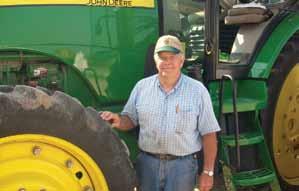


Tom Flora – Delphi, Indiana
Kaffenbarger Farms – New Carlisle, Ohio

Ohio Soybean News
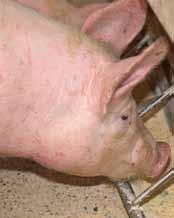
About the cover: Animal agriculture consumes about 97 percent of U.S. soybean meal. Here in Ohio, animal agriculture represents about $7.3 billion in revenues, $1.3 billion in household income, and 41,000 jobs. In addition, it yields an estimated $319 million
and $165 million in


Perspective

Bret Davis
Ohio Soybean Association Chairman
Delaware County soybean farmer
A Letter From the Chairman
Welcome to 2014 and another productive year in the soybean world!
The Buckeye State has sure seen its fair share of cold temperatures this winter season. I know some outside livestock needed to be moved inside a barn or to another field on the days we saw temperatures drop below zero. Spring is right around the corner and planting season will be here before we know it.
As a reminder, soybean checkoff dollars cannot be used to advocate for effective policies and legislation. Therefore, OSA membership keeps the soybean industry proactive and profitable while also making strides of continuous improvement. As we enter a new year, I believe it’s important for you to consider becoming member if you are not one already.
The Ohio Soybean Association (OSA) is looking to gain insight from valued OSA members as part of its strategic planning. If you are currently an OSA member and interested in helping OSA better understand your needs and facilitate the design of programs and initiatives, I encourage you to complete the OSA membership survey. The survey is around 50 questions and should take less than 15 minutes to complete. The responses will be kept confidential as OSA values its members and feedback. Your responses are extremely important for the OSA Board’s strategic plan.
If you are a current OSA member, please visit www.osaresearch.com to take the OSA membership survey. If you have any additional questions, please contact the soybean office at 614-476-3100.
Stay safe.
SOYBEAN ASSOCIATION
President
Jerry Bambauer, Auglaize County
Chairman
Bret Davis, Delaware County
First Vice President
Tom Price, Putnam County
Vice President
Mike Heffelfinger, Van Wert County
Treasurer
Jeff Roehm, Highland County
Secretary
Adam Graham, Logan County
Trustees
Allen Armstrong, Clark County
John Buck, Marion County
Amy Sigg Davis, Warren County
Dave Dotterer, Wayne County
Caitlyn Heimerl, Licking County
James Heimerl, Licking County
Todd Hesterman, Henry County
Chad McIlvaine, Ross County
Lane Osswald, Preble County
Bruce Simmons, Medina County
Bob Slicker, Stark County
Jeff Sollars, Fayette County
Industry Affiliates
Kathy Alvarez, Bunge N.A.
Bill Tom, Trupointe Cooperative
American Soybean Association Board
Representatives
Bret Davis
Jerry Bambauer
Jeff Sollars
Staff Credits
Adam Ward – Publisher
Jennifer Coleman – Editor
Katie Bauer – Staff Writer
Judy Brent – Production Manager
Carol Locker – Designer

Ohio Soybean News is published six times a year by the Ohio Soybean Association, 918 Proprietors Rd., Suite A, Worthington, OH 43085 Phone: 614-476-3100. For address corrections contact Ohio Soybean News at 918 Proprietors Road, Suite A, Worthington, Ohio 43085. Web address: www.soyohio.org E-mail: cdeboard@soyohio.org
Comments and statewide news articles should be sent to the above address. Advertising space reservations must be made by the first of the month preceding publication. In consideration of the acceptance of advertisement, the agency and the advertiser must, in respect of the contents of the advertisement, indemnify and save the publisher harmless against any expense arising from claims or actions against the publisher because of the publication of the content of the advertisement.
For Advertising Information Call: Tom Shearing
Advertising Sales Manager
Phone: 585-476-2426

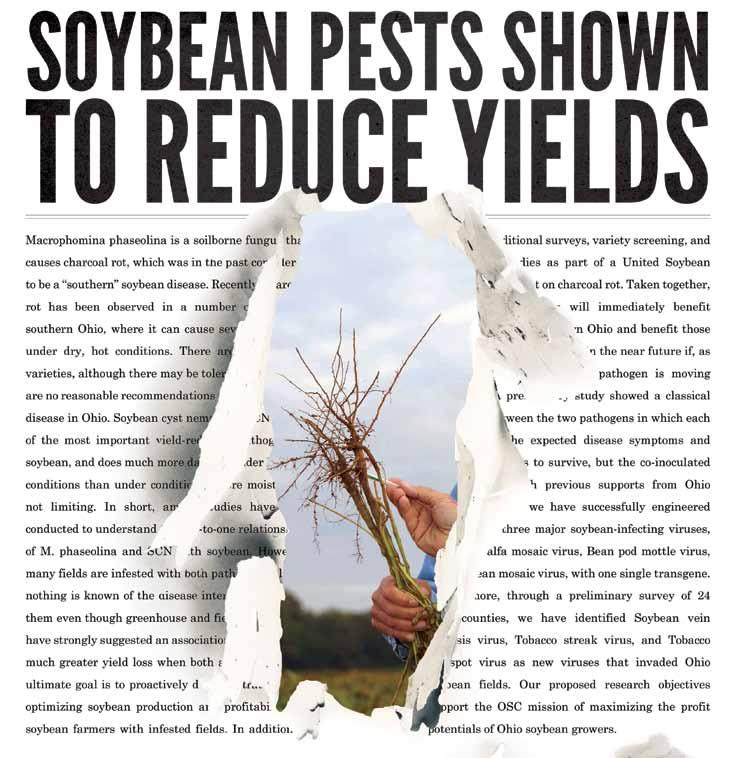

We’re helping you write a better end to this story.
Your soybean checkoff dollars are funding dramatic new research that will ultimately result in disease and pest resistant soybean traits. These ongoing efforts as well as research into new soybean varieties are helping boost the yields and profits of Ohio’s soybean farmers.




message brought to you by Ohio soybean farmers and their checkoff.
©2013, Ohio Soybean Council

SOY TALK
Using the Map
For centuries, travelers have used maps to get where they wanted to go. Without one, they might not take the best route, or worse, miss their destination altogether.
Similarly, soybean breeders are using genetic mapping to produce more complete seeds that meet the needs of farmers.
“Through the mapping of the soybean genome, we are learning more about the genetic components of disease characteristics,” says Robert Waller, Dow AgroSciences soybean product development agronomist. “We now have the capacity to look more closely at specific genetic markers associated with important characteristics. This information allows us to identify products earlier on in the breeding process that have a greater chance of having certain disease characteristics. When we know we have the right disease characteristics, we can turn our attention to the agronomic characteristics. This delivers a more complete soybean package to growers.”
The development of new soybeans begins with a minimum of three years of testing at multiple locations. This allows breeders to build a database of characteristics for a specific variety. It’s critical to collect data under different environments to position the soybean on the right acres.
“Soybean genome mapping has provided us with a roadmap. We are now deciding the best roads to take to higher-yielding soybeans.”
In addition to agronomic attributes, researchers look for disease resistance characteristics and adaptability to environmental factors such as high pH soils and weather-related stress.
“There will always be emerging problems that are limiting factors to yield potential. When we take care of one disease or pest, a new one takes its place. Diseases and pests may prevent a variety from reaching its fullest genetic potential. By mapping out the essential disease and agronomic characteristics, we start to remove the limiting factors of yield potential,” adds Waller.
The soybean checkoff funds basic research that helps the industry develop specific varieties. This research identifies genes that are beneficial to yield and agronomic characteristics. Individual companies can use this research to form the building blocks of new products.
“Soybean genome mapping has provided us with a roadmap. We are now deciding the best roads to take to higher-yielding soybeans. As long as we continue to fund basic research, the applied research we do at Dow AgroSciences and Mycogen Seeds will unlock more yield potential for growers.”
Brought to you by:
U.S. Soybean Exports to China Soar
U.S. soybean exports to China are taking off for the 2013-2014 market year. As of December 10, 2013, China had purchased 26 million metric tons of U.S. soy, primarily for use in China’s growing edible oil and feed market. This figure is about 4.5 million tons higher than China’s U.S. soy imports for the entire 2012-2013 market year.
According to the U.S. Soybean Export Council (USSEC) CEO Jim Sutter, one reason for this rapid rise is that China may be avoiding potential shipping delays from South America.
“Even though the South American market has entered its soybean-selling season, it is still facing logistics difficulties to deliver soybeans. This has formed a big concern for Chinese companies looking to import their soybeans,” stated Sutter.
Soybeans are widely used in China for cooking oil and animal feed; many Chinese consumers have shifted away from eating a diet primarily composed of grains and have become accustomed to having more oil and meat. This shift in dietary habits is an indicator of economic success and is demonstrated by China’s fast modernization pace of livestock and the food supply chain.
“The demand for soybean meals, edible oil, and soybeanbased fish and hog feed will provide many opportunities for Ohio and U.S. soybean exports,” said Jeff Roehm, Ohio Soybean Association (OSA) board member and soybean farmer from Highland County. “There is a lot of potential in these sectors.”
USSEC Country Director-China Zhang Xiaoping said it would be difficult for China to quickly increase its soybean output because farmers in the Northeast provinces cannot get more land or convert land grown for other crops such as corn and rice. The cost of raising domestic output is high due to rising farming equipment prices and limited arable land.
“Restricted by the disparity of weather and climate conditions, Chinese farmers are having a hard time converting existing crops to soybean fields in other parts of the country. Therefore, China is importing soybeans from the U.S. and South America, where the cost of growing soybeans is lower,” Zhang explained.
China’s edible oil imports rose 9% year-on-year to 5.98 million tons in the first three quarters of 2013 which indicates the country’s widening gap in edible oil supply and its increasing dependence on the world market for soybean and oil consumption. u

2013 OSA Soybean Yield and Quality Contest Winners

The Ohio Soybean Association (OSA) recently announced the winners of the 2013 Ohio Soybean Yield and Quality Contest. This is the fourth year for the statewide contest with a total of 98 applicants. There were four different yield categories available and the quality portion of the contest was based on highest percentages of oil and protein.
“On behalf of OSA, I’m happy to congratulate the winners of the 2013 Ohio Soybean Yield and Quality Contest,” said Jerry Bambauer, OSA president and Auglaize County soybean farmer. “There were some very impressive yield numbers and great quality results this year. This contest serves as a testament to the consistent and high quality supply of soybeans Ohio soybean farmers grow.”
The 2013 Overall State Yield Champion was Hickory Dell Farm in Cedarville, Ohio. Hickory Dell Farm recorded a yield of 80.98 bushels/acre with the Croplan R2C 3290 variety.
OSA would like to thank Asgrow, Beck’s Hybrids, CROPLAN, DKG Seeds, LG Seeds, Ohio AgNet, Ohio’s Country Journal, Ohio Soybean Council, Powell Seeds, R Farm Seeds, Rupp Seeds, Schlessman Seeds, Seed Consultants, Stewart Seeds, Stine Seed Company, Wellman Seeds and Monsanto for sponsoring the 2013 contest.
To learn more about the Ohio Soybean Yield and Quality Contest, visit www. soyohio.org/yieldcontest. u
Qualit Y Results
2013 Ohio Grain Farmers Symposium Welcomed New Location
The 2013 Ohio Grain Farmers Symposium (OGFS) brought together farmers from across the state to share information and learn about a variety of topics relevant to Ohio’s soybean, corn and wheat farmers. Hosted by the Ohio Soybean Association (OSA) and Ohio Corn & Wheat Growers Association (OCWGA), the event was held at The Nationwide & Ohio Farm Bureau 4-H Center in Columbus, Ohio.
This year’s event included topics relevant to Ohio farmers including important issues that are on the horizon for 2014. With a full agenda, speakers covered the future of sustainability and GMOs in agriculture, possible water regulations, and updates from state and national partners.
OGFS kicked off with a welcome from The Ohio State University Vice President and Dean, Bruce McPheron along with
By Katie Bauer
OSA president, Jerry Bambauer, and OCWGA president, Brent Hostetler. Attendees also heard from Director David Daniels from the Ohio Department of Agriculture.
“The 2013 OGFS was very successful with a variety of speakers and new location,” said Jerry Bambauer, OSA president and soybean farmer from Auglaize County. “It is my hope that farmers left with good information and feeling optimistic about agriculture’s progressive industry.”
After the morning session, attendees heard from a panel of experts in the area of sustainability. Sitting on the sustainability panel were representatives from Wal-Mart, Cargill and Biotechnology Industry Organization, who shared their thoughts on what sustainability means to them and their re-
spective organizations.
Attendees also heard from industry representatives and Ohio farmers on the benefits of high oleic soybeans, a sustainable new soybean variety being grown in Ohio.
Throughout the day, soybean, corn and wheat farmers also had the opportunity to submit comments to the Environmental Protection Agency (EPA) regarding the need of maintaining a dependable Renewable Fuel Standard (RFS) for the future.
The EPA has proposed cutting renewable fuels volumes next year under the RFS, including for biodiesel. The EPA’s proposed rule for next year would set biodiesel volumes at 1.28 billion gallons while shrinking the overall Advanced Biofuel requirement to 2.2 billion gallons.
The annual event wrapped up with OSA and OCWGA annual meetings. u
CHECKOFF RESEARCH SUCCESSES IN OHIO


The Ohio Soybean Council (OSC) funds a variety of projects each year to increase the profitability of your soybean operation. Take a look below at some of the areas in which OSC funds research on behalf of soybean farmers in Ohio.



Ohio Soybean Association Year in Review
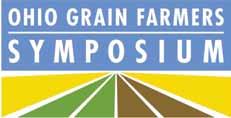
The 2013 Ohio Grain Farmers Symposium had a new location this year. Held at The Nationwide & Ohio Farm Bureau 4-H Center in Columbus, Ohio and hosted by the Ohio Soybean Association (OSA) and the Ohio Corn and Wheat Growers Association, the event included speakers on a variety of topics including the latest policy developments.

In partnership with Beck’s Hybrids, OSA launched the Beck’s Young Farm Leader program. Highlighting the hard work, dedication and leadership of young Ohio farmers, one farmer each quarter was recognized. This year’s winners included Jeff Adams, Nathan Brown and Kerrick Wilson.
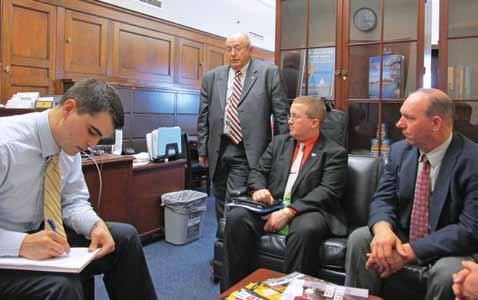
OSA traveled to the Ohio Capitol and met with Ohio legislative leaders. In meetings with over 20 legislators that sit on the House Agriculture and Natural Resources Committee or the Senate Agriculture Committee, OSA farmer-leaders addressed how to increase economic opportunities for Ohio soybean farmers.
The Japan Partnership Team consisting of 11 representatives of soybean crushers and importers from Japan Oilseed Processors Association and Japan Oil & Fat Importers & Exporters Association visited Ohio fields growing high oleic soybeans. The Japanese industry is interested in high oleic soybean oil because the oil has improved functionality, contains zero trans fats and low saturated fat.

Kerrick Wilson of Preble County
OSA officers for 2013-2014
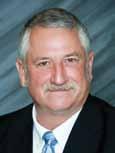






OSA hosted the annual Harvest Classic golf outing to benefit the Soy Political Action Committee. This year’s winners included (from left to right) Roger Tedrick, Jim Scheid, Dave Miller and Rick Weininger.

OSA worked closely with the Ohio Corn and Wheat Growers Association, Ohio Farm Bureau Federation and others on Senate Bill 150, the nutrient management and water quality bill. Thanks to this effort, the regulations in the original bill were significantly reduced.

OSA successfully lobbied to increase the indemnity fund to protect farmers’ interests at grain elevators.
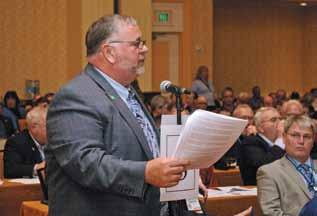
During the 2013 Commodity Classic, ASA held the annual delegate voting session to set its policy direction for 20132014. OSA farmer-leaders represented Ohio as delegates.
Bret Davis Chairman Adam Graham Secretary
Jerry Bambauer President Tom Price First Vice President
Jeff Roehm Treasurer
Mike Heffelfinger Vice President
2013 Beck’s Young Farm Leader of the Year
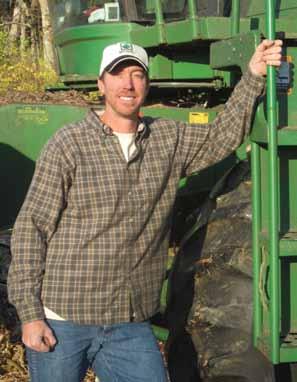
Congratulations Kerrick Wilson of Preble County who received a trip for two to the 2014 Commodity Classic in San Antonio, Texas.
YOU could be next.
The Beck’s Young Farm Leader Program was established to highlight young Ohio farmers who have taken leadership roles in their communities while developing a foundation for farming success.
The 2014 Beck’s Young Farm Leader applications are now available! Visit www.soyohio.org/becksyoungfarmleader for more information and download an application today.
Beck’s Young Farm Leader Application Guidelines:
• Growers must be between the ages of 21 and 45.
• Any soybean grower may apply for the program; selected participants are required to have a current Ohio Soybean Association membership.
• Applicants are not required to grow Beck’s Hybrids products to be eligible to win.
• Applicants should demonstrate an interest in pursuing leadership roles within the soybean industry.


South American Harvest Limits Marketing Options in Stored Grain
As we move into the winter months, there is plenty to keep you busy: everything from comparing yield maps to making decisions for next year’s crop to repairing equipment and much more.
Another decision you may be faced with is storage. On-farm storage is becoming increasingly popular. For soybeans, this year may not be the best time for that according to Dr. Matthew Roberts, associate professor in the department of Agricultural, Environmental and Developmental Economics at The Ohio State University. “The soybean market is in an inverse right now.” Dr. Roberts suggests that if you are storing soybeans on your farm, you
should get them priced between now and January. The South American soybean harvest begins as early as February and will continue through April. During this time, soybean prices will inevitably fall.

Storing grain is always an option to manage risk because of the volatility of prices. It is important to remember to get stored beans priced by January to avoid taking a bigger loss if you wait until after the South American crop is harvested.
Managed by the Ohio Soybean Council and soybean checkoff, the Soybean Rewards Program helps Ohio soybean farmers increase productivity, yield and profitability by providing information and research related to premium opportunities, new varieties, disease and pest management and conservation practices.

Animal Agriculture Has I
By Katie Bauer
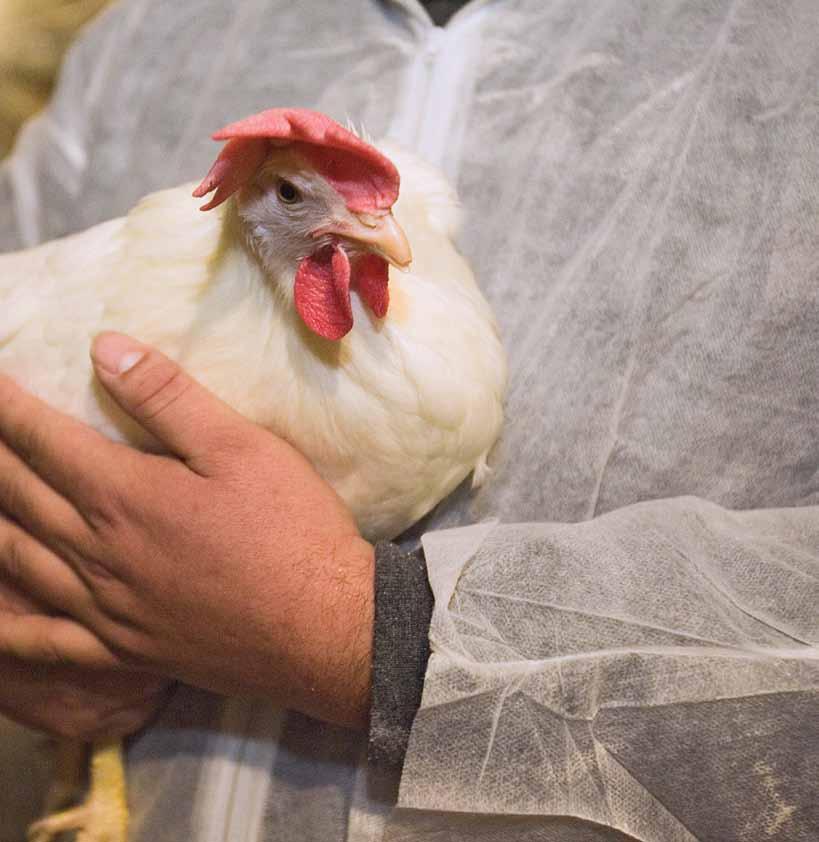
t’s no surprise that animal agriculture is important to Ohio and the overall U.S. economy. From chickens and pigs to cattle and fish, animal agriculture supports your bottom line.
Soybean meal plays an important role in animal agriculture as the demand for soybean meal starts with our livestock friends. In fact, animal agriculture consumes about 97 percent of U.S. soybean meal. A recent soybean checkoff-funded report concluded that U.S. soybean farmers shouldn’t let their support for the animal agriculture industry weaken.
“The Ohio soybean industry is dependent on the impact of the Ohio animal agriculture industry,” said Bill Bayliss, Ohio Soybean Council (OSC) board member and soybean farmer from Logan County. “We need to support our end-users in order to remain competitive with the quality soybeans Ohio produces.”
The report, titled the National Animal Agriculture Economic Analysis, also outlined the economic benefits the poultry and livestock sectors provide at the state and national levels. In 2012, animal agriculture provided many benefits to the national economy. At a national level, animal agriculture supported 1.8 million jobs, $346 billion in total economic output, $60 billion in household incomes and $21 billion in income and property taxes paid.
Ohio impact
Here in Ohio, animal agriculture represents about $7.3 billion in revenues, $1.3 billion in household income, and a little over 41,000 jobs. In addition, it yields an estimated $319 million in income taxes, and $165 million in property taxes. Over the past decade, the expansion of animal agriculture in Ohio has led to increases of $1.8 billion in economic output, $330 million in household wages, 12,300 jobs, and $83 million in tax revenue.
Photo provided by the Ohio Poultry Association
an Appetite for Soybeans
Animal Agriculture is Important to Ohio
• Ohio ranks 2nd nationally in egg production.
• Ohio ranks 11th nationally in milk production.
• Ohio ranks 9th nationally in turkey production.
That’s a lot of soybeans
According to the study, U.S. poultry, livestock and fish farmers used more than 30 million tons of soybean meal in the time period measured, or the meal from
• Ohio ranks 8th nationally in hog production. Animal Agriculture’s
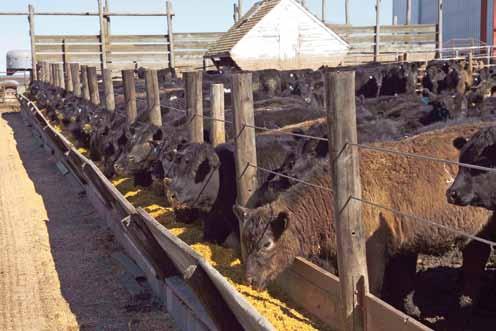
more than 1.26 billion bushels of U.S. soybeans. Broilers and swine continue to be by far the two biggest soybean-meal consumers. The meal consumption per species breaks down as follows:
Impact on Ohio’s Economy
■ Broiler chickens: the meal from about 476 million bushels of U.S. soybeans
■ Hogs: the meal from about 410 million bushels
■ Laying hens: the meal from 84 million bushels
■ Turkeys: the meal from more than 75 million bushels
■ Other: the meal from about 217 million bushels.
Soybeans play an important role in animal agriculture both locally and abroad, and both industries rely on one another to remain competitive. So, as you prepare for the 2014 planting season, don’t forget to remember poultry and livestock, your biggest customer and supporter of your community. u
Funds
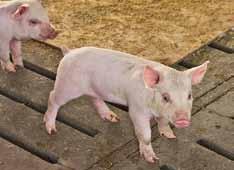

Bioheat® and Biodiesel a Big Hit in the Big Apple
Bioheat® and biodiesel took center stage when farmers from across the country heard state-of-theindustry updates and explored the inner workings of the New York City Sanitation Department, Port Authority of New York and New Jersey at JFK Airport and Brookhaven National Laboratory on Long Island. These facilities’ use of biodiesel shows the possibilities are endless in the city and state.
As part of the National Biodiesel Board (NBB) Big Apple Bioheat Tour, Amy Sigg Davis, Ohio Soybean Council (OSC) board member and soybean farmer from Warren County discussed New York City’s extensive use of Bioheat and biodiesel with city officials and researchers.
“New York uses more heating oil than any other state, and New York City’s vehicle fleet is the largest in the country,” said Davis.
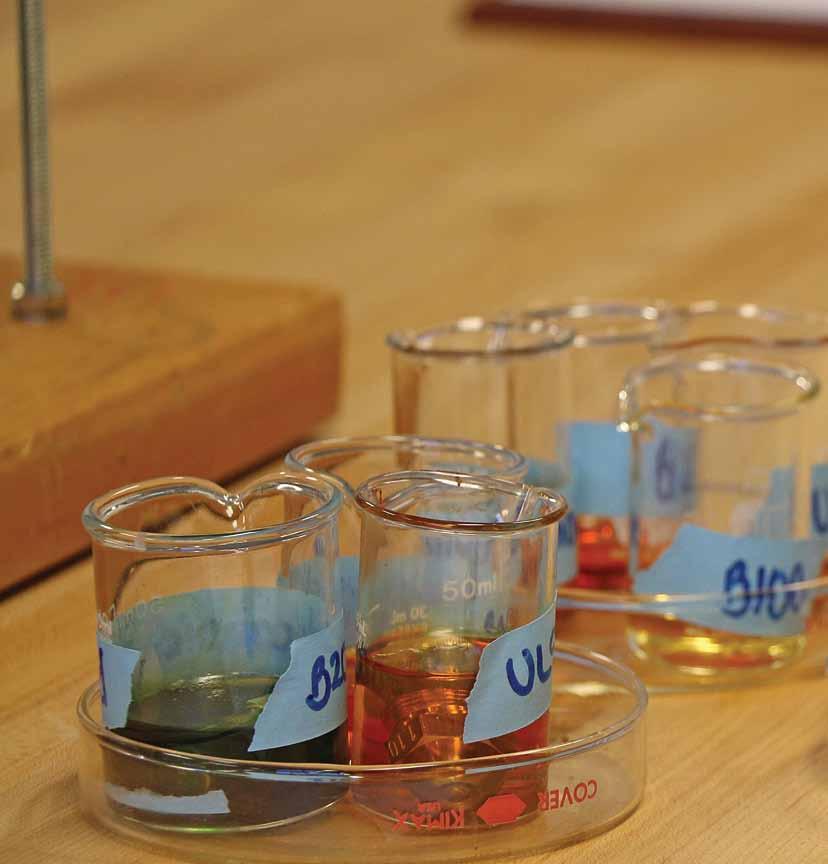
“This makes the Empire State and the Big Apple an excellent market for biodiesel and Bioheat, as well as the soybean oil that remains the primary feedstock for both.”
Farmers toured the New York City Sanitation Department’s vehicle testing and maintenance facility, a state-of-theart complex responsible for maintaining the department’s more than 5,500 vehicles, 3,500 of which are using biodiesel blends.
Tour attendees also got an up-close look at how biodiesel battles extreme weather at the Port Authority of New York and New Jersey at JFK Airport. As farmers piled off of buses at JFK Airport during a snowstorm, a number of biodiesel-powered vehicles were working hard to clear runways. The Port Authority of New York and New Jersey uses a B20 biodiesel blend all year. It also uses a number of soy-based oils and lubricants in the maintenance shop, an-
other way the organization is improving operations with help from America’s soybean farmers.
Farmers also heard state-of-the-industry discussions at the New York Mercantile Exchange, including updates from New York Corn and Soybean Growers Association board members Ron Robbins and Todd DuMond on New York farmers’ unique position in helping to expand Bioheat and biodiesel use in the Northeast.
Steven Levy, a managing director at Sprague Operating Resources and chair of NBB, provided an industry perspective on New York’s past and projected future use of Bioheat and biodiesel. Sprague is one of the Northeast’s largest independent suppliers of energy services, such as home heating oil and diesel fuels.
John Maniscalco, of New York Oil Heating Association, talked about the re-
cent progress of the New York Bioheat program. Keith Kerman, chief fleet officer with the NYC Department of Citywide Administrative Services, shared updates on the city’s extensive use of biodiesel in its 8,000 diesel-vehicle fleet.
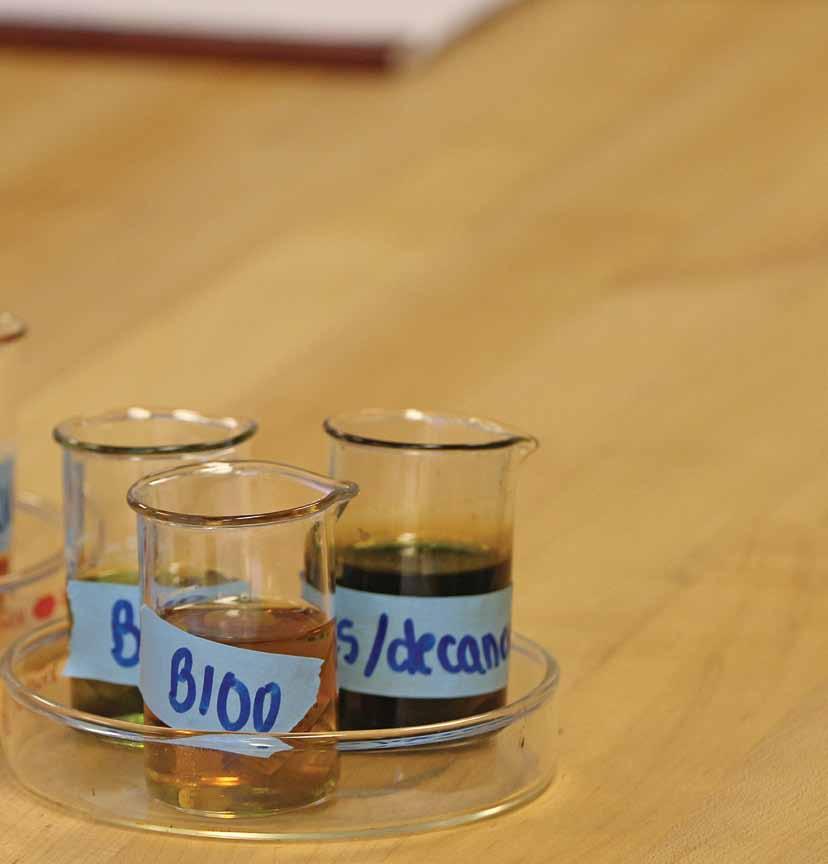
Farmers finished the tour at Brookhaven National Laboratory. More than 3,000 Brookhaven scientists and engineers work on the country’s priority energy projects, including the continued development of Bioheat and biodiesel as an advanced biofuel. Among the demonstrations, researchers showed farmers the progress they’re making to ensure biodiesel blends continue to meet quality standards. Farmers also had the chance to ask about soy-checkoff-funded research projects to help ensure biodiesel and Bioheat continue to meet customers’ needs.
“The Big Apple is an exciting example of biodiesel’s success, in both the sheer volume of fuel the city uses and in the degree of excitement citizens and city officials have for its positive environmental impact,” said Davis. “New York City requires all heating oil sold in the city to contain 2 percent biodiesel, a requirement the biodiesel industry hopes expands statewide.”
New York uses more heating oil than any other state, or about 2 billion gallons of home heating oil every year. This means that a 2 percent statewide requirement would guarantee the use of around 40 million gallons of biodiesel annually.
Across all New York City agencies, 90 percent of the vehicles that run on diesel are using biodiesel blends. This has helped contribute to the city’s 30 percent reduction in greenhouse-gas emissions. The city’s use is helping show biodiesel can be used yearround. u

Soy Transportation Coalition and Panama Canal Authority Extend Partnership

By Mike Steenhoek, Executive Director, Soy Transportation Coalition
The Soy Transportation Coalition and the Panama Canal Authority recently extended the memorandum of understanding (MOU) between the two organizations. The agreement, signed by Patrick Knouff, chairman of the Soy Transportation Coalition, and Jorge L. Quijano, CEO of the Panama Canal Authority, extends the partnership between the two organizations to perform joint promotional events and exchange information in the effort to raise awareness of the Panama Canal expansion and its potential impact on U.S. agriculture.
The original MOU was signed in May of 2011. At the time, while the Panama Canal Authority had signed MOUs with numerous port authorities – both U.S. and international – the agreement with the Soy Transportation Coalition was the first signed with an organization representing a commodity or product that utilizes the canal.
"Last year approximately 600 mil -
Established in 2007, the Soy Transportation Coalition is comprised of 12 state soybean boards, the American Soybean Association, and the United Soybean Board. The goal of the organization is to position the soybean industry to benefit from a transportation system that delivers cost effective, reliable, and competitive service.
lion bushels of U.S. soybeans transited the Panama Canal en route to our international customers," explains Knouff, soybean farmer from Minster, Ohio who also serves as chairman of the Ohio Soybean Council (OSC). "We anticipate that this important link in our logistics chain will become even more significant following the completion of the canal expansion. It is in the interest of both the Soy Transportation Coali -
The Panama Canal Authority is in charge of managing, operating and maintaining the Panama Canal, one of the main arteries of world commerce. The Panama Canal Authority is currently engaged in a $5.25 billion expansion project that will double the waterway’s capacity and allow for the transit of larger and wider vessels, which will result in economies of scale in shipping and an improved transportation link through Panama. The expansion is scheduled to be completed in 2015.
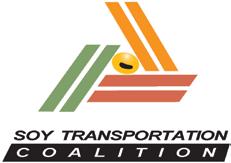
tion and the Panama Canal Authority to work together to ensure that we fully take advantage of the future efficiency gains from the expansion. If we don't, it will be a missed opportunity. Extending this memorandum of understanding between our two organizations helps ensure our collaboration toward this end will continue."
"We welcome partnerships with organizations that benefit from the services offered by the Panama Canal," Panama Canal Administrator Jorge L. Quijano said. "This MOU will enable us to keep the Soy Transportation Coalition informed about the progress of the Panama Canal Expansion and its impact for the transportation of this commodity through the waterway."
In the fall of 2011, the Soy Transportation Coalition released a white paper, examining the impact of the Panama Canal expansion on U.S. agriculture. The Panama Canal Authority assisted the research by supplying information. According to the study, “Panama Canal Expansion: Impact on U.S. Agriculture,” the canal expansion will allow ocean vessels to be loaded with an additional 500,000 bushels of soybeans for the export market, which will equate to an additional $6-7 million in additional value per vessel. This increased efficiency of transportation will allow U.S. agriculture to remain competitive in the international marketplace.
The full study can be accessed at http://www.soytransportation.org. u

Investing Checkoff Dollars
A New Way to Use Soy to Feed Fish
By Alissa Armstrong

Soybeans continually prove to have a variety of uses. Located in Yellow Springs, Ohio, EnviroFlight, LLC has taken the use of soy to a whole new level.
Diminishing fish stocks coupled with increased global demand has resulted in a 400 percent increase in fishmeal’s price over the last 20 years. This statistic is part of what drove Glen Courtright to begin his adventure with commercially rearing black soldier fly larvae (BSFL) to manufacture his own fish food. Increased feed costs are not only a concern for those who are raising fish, they are also a concern for consumers who ultimately pay the price for the end product.
Founded in 2009, EnviroFlight’s mission is to develop sustainable and safe animal feed ingredients using regionally available, low-value materials. The company’s proprietary technology makes it possible to commercially produce sustainable animal feeds, oils and natural fertilizers from the byproducts of food manufacturing, biofuels and brewing, using the industrial cultivation of BSFL.
EnviroFlight is in the process of obtaining FDA food use authorization and the Association of American Feed Control Officials (AAFCO) ingredient approvals.
“Soy plus BSFL seemed to be the answer,” commented Glen Courtright, founder and CEO of EnviroFlight.
How it works
Knowing that fish cannot solely consume soy, they combined soy meal with BSFL meal to produce a highly nutritious fish food. The combination of soy and BSFL in the feed ration for fish simply balances out the amino and fatty acid profiles, and adds some palatability to the feed.
EnviroFlight is also working with major fast food companies and their suppliers to reduce waste, and also helping them achieve their mission of becoming zero-waste, zero-landfill businesses. EnviroFlight uses the BSFL to recover nutrients from food manufacturing byproducts. Liquid and semi-solid byproducts are blended with soy hulls or dried distillers grains with solubles (DDGS) and are then fed to the BSFL. After two weeks, the BSFL, soy hulls and DDGS are harvested and dried. The BSFL are separated from the soy hulls and DDGS, and the oils are extracted from the BSFL. The resulting BSFL meal is combined with soy meal, corn, vitamins and minerals in custom formulated rations for yellow perch, freshwater prawn and rainbow trout. The leftover soy hulls and DDGS are used as a natural fertilizer or a high protein feed ingredient for cattle or freshwater prawns and tilapia feed.
Customers
EnviroFlight is currently providing high-quality feeds to zoos, nationwide pet
food distributors and regional aquaculture producers. The company sells live and dried BSFL through nationwide pet food distributors. Live insects and insect meal are sold to the Cincinnati, Indianapolis and San Antonio Zoos. EnviroFlight sells a formulated feed to Ohio freshwater prawn feed producers and is also selling specialty and bulk fertilizers.
“We produce the insect proteins to feed the fish, to feed the people,” commented Courtright.
What’s next?
As business continues to grow for EnviroFlight, they have plans to expand and build a full-scale plant capable of producing over 2,000 tons of material for fish food in Greene County, Ohio.
“Soybean meal use in aquaculture feed is not new, but what Glen Courtright and his staff at EnviroFlight are doing is unique,” said Tom Fontana, Director of Research and Education at the Ohio Soybean Council. “The combination of their protein source with soybean meal forms a highly nutritious feed product, which also produces feed in an efficient and sustainable way. Waste is almost totally eliminated in their process of feed production and the byproduct of the process is also utilized.”
The future is bright for EnviroFlight, and they are excited to continue to grow and be a part of the soybean industry. u
EnviroFlight, LLC, located in Yellow Springs, Ohio, is producing animal feeds, oils and natural fertilizers from the byproducts of food manufacturing, biofuels and brewing, using the industrial cultivation of black soldier fly larvae.


Effect of Pyraclostrobin Fungicide on Plant Stress, Disease, and Yield
By Laura Lindsey, Anne Dorrance, and Grace Bluck
The Ohio Soybean Council (OSC) invests soybean checkoff dollars on initiatives and programs that improve soybean farmers’ bottom line. OSC supports research that increases profitability, improves soybean characteristics and identifies best management practices. Because of these investments in production research, OSC partnered with soybean researchers at The Ohio State University to determine which management practices lead to higher soybean quality traits and yield. Researchers are determining which non-traditional agronomic practices contribute to an increase in soybean yield. This ongoing research represents the major soil types and growing regions of Ohio (northern, central, and southern). Below are the results from the first year of the Omission Trials.
Many growers are interested in highinput soybean production. In 2013, the effect of inputs on photosynthesis, disease, and yield was evaluated in three Ohio counties. Specifically, this article focuses on the effect of pyraclostrobin fungicide.
Four production systems were evaluated
1.) High input — Gypsum, Rhizobia, manganese foliar fertilizer, insecticide, and fungicide
2.) High input minus fungicide — Gypsum, Rhizobia, manganese foliar fertilizer, and insecticide (No fungicide application)
3.) Traditional — No inputs
4.) Traditional plus fungicide — Fungicide application
Our questions included: Does yield decrease when fungicide is left out of the high input system? Does yield increase when fungicide is added to the traditional system?
In Henry County, yield decreased by 5 bu/ac when fungicide was not included in the high-input system. Brown spot disease was not affected by the fungicide application, but disease levels were low. Brown spot affected <6% of the bottom canopy and <2% of the middle canopy. Frogeye leaf spot in the top canopy was reduced from 6% to 2% when fungicide was applied in the traditional system and increased from <0.5% to 4% when fun-
gicide was excluded from the high input system. Photosynthesis efficiency was also influenced by fungicide. When fungicide was excluded from the high-input system, the efficiency of photosynthesis decreased.
In Delaware County, there were no significant yield differences among the four systems. Fungicide reduced brown spot from 17% to 10% in the bottom canopy at the R4 growth stage. Brown spot affected less than 2% of the middle canopy at the R4 and R6 growth stages. Photosynthetic efficiency was not influenced by fungicide application.
In Clinton County, yield decreased by 12 bu/ac when fungicide was excluded from the high-input system. At R4, brown spot increased from 8% to 15% in the bottom canopy when fungicide was not included in the enhanced system. At R6, brown spot increased from 5% to 16% in the bottom canopy when fungicide was excluded from the high-input system and decreased from 12% to 4% when fungicide was applied in the traditional system. Brown spot was less than 4% in the middle canopy at both R4 and R6. Frogeye leaf spot affected <2% of the top canopy at R4 and R6. Photosynthetic efficiency was not influenced by fungicide application.
Back to our two questions
Does yield decrease when fungicide is left out of the high input system?
Yes, yield did decrease at two of the three locations when fungicide was eliminated from the high input system. This was followed by an increase in frogeye leaf spot in the top canopy at one location and increase in brown spot in lower and midcanopy and frogeye in the upper canopy at another location.
Does yield increase when fungicide is added to the traditional system?
No, yield did not increase when fungicide was added to the traditional system. This indicates that there may be a synergistic effect of tank-mixing insecticide, manganese, and fungicide. Additionally, the high input system may have favored disease development. Further studies are needed to evaluate these effects. u
(Above) Yield comparisons between high input and high input minus fungicide treatments at Henry, Delaware, and Clinton County locations.
(Below) Yield comparisons between traditional (no input) and traditional plus fungicide treatments at Henry, Delaware, and Clinton County locations.
*ns – No statistically significant differences. Column with different letters indicate statistically significant differences at 95% confidence level. (i.e., 95% chance results were not due to “chance.”)

Investing Checkoff Dollars
2014 Brings New Soy-based Products to the Market
By Katie Bauer
Big things often have small beginnings. From field to market, soybeans prove to be versatile for many applications. Composed of both protein and oil, soybeans open the door for a variety of uses.
Soy protein, which makes up 80 percent of the soybean, primarily serves as animal feed and is incorporated in many human foods. For oil, the U.S. food industry consumes more than 83 percent of U.S. soybean oil for purposes such as cooking, baking and frying. The remaining soybean oil is used in industrial applications such as adhesives, coatings, lubricants, plastics and specialty products, but also biodiesel, a fuel using soybean oil as a feedstock. When it comes to the U.S. soybean oil supply, there’s room at the table for both human consumption and industrial uses of soybean oil.
Why Soybeans?
“Soybeans are often referred to as the miracle crop,” said said Keith Roberts, Ohio Soybean Council (OSC) board member and soybean farmer from Marion County. “Soybeans provide a great source of protein and oil worldwide and Ohio is home to several companies that sell or manufacture soy-based products.”
Because soy grows throughout the world, it represents a viable and renewable replacement for petrochemicals. Soybean production increased more than 70 percent in the last twenty years. And, in the same time period, soybean farmers used more sustainable farming practices by reducing energy use, as well as reducing carbon emissions.
The use of soybean derivatives in manufacturing isn’t new. In fact, for the past decade, U.S. soybean farmers have helped fund the development of many successful new uses for soybeans, including soy plastics and foams, soy methyl esters and soy ink. Research to find new applications for these products continues in an effort to utilize more U.S. soybeans.














Soy Products Guide
New soy-based products are quickly gaining popularity as the United Soybean Board (USB) and the soybean checkoff continue to update industry leaders and researchers about the many benefits of soy.
Ohio Company Listings
The companies listed are contracted annually to verify that their products contain soy in some form and are available for sale. In some cases, new products will be launched, and other products may no longer be available. Many companies have indicated an interest in wholesale distribution, and resellers are encouraged to contact them directly. If you would like to have your soy-based product added to the Soy Products Guide, please contact the United Soybean Board at info@ unitedsoybean.org.
Atagencer, LLC Cleveland, Ohio www.atagencer.com
Biobased Asphalt Systems, Inc Sidney, Ohio www.biorestor.com
Braden Sutphin Ink Company Cleveland, Ohio www.bsink.com
Deceuninck North America Monroe, Ohio www.deceuninck-americasa.com
Emery Oleochemicals Cincinnati, Ohio www.emeryoleo.com
Gojo Industries Akron, Ohio www.gojo.com
Kennedy Ink Company, Inc Cincinnati, Ohio www.Kennedyink.com
Lubrizol Wickliffe, Ohio www.lubrizol.com
Nutek Green Chagrin Falls, Ohio www.nutekformulations.com
Omnova Soultions Fairlawn, Ohio www.omnova.com
Peter Cremer North America Cincinnati, Ohio www.petercremerna.com
Polyone Corporation Avon Lake, Ohio www.polyone.com
RSC Biosolutions Mentor, Ohio www.rscbio.com
Renewable Lubricants, Inc Hartville, Ohio www.renewablelube.com
Sherwin-Williams Cleveland, Ohio www.sherwin-williams.com
Soysolv Inc Tiffin, Ohio www.soysolv.com
Spartan Chemical Company Maumee, Ohio www.Spartanchemical.com
Sprayon Cleveland, Ohio www.sprayon.com/contactus
TTI Floor Care North America Glenwillow, Ohio www.ttifloorcare.com
USA Soy Solutions Sidney, Ohio www.usasoysolutions.com
Alternative industrial products have seen a heightened demand due to increasing government regulations. Improving overall product performance with soy is prompting manufacturers to replace petrochemicals with the renewable product.
Every year, USB publishes the “Soy Products Guide” to help businesses and consumers identify commercially available soybased products and ingredients. Featuring 890 soy-based products for consumers and industrial buyers, and 142 ingredients for researchers and product manufacturers, the guide makes it easier than ever to replace petrochemicals and carcinogens with clean, green soy. Visit www.soynewuses.org to view an electronic version of the new 2014 Soy Products Guide.u
by

Consumer Attitudes about Nutrition Survey Celebrates 20 Years with Positive Soy and Health Finding
By Elise Daly
Soy offers a positive solution to the nutrition trend consumers most watch - the fat content of their diet. The United Soybean Board’s (USB) 20th annual Consumer Attitudes about Nutrition survey confirms consumers are paying attention. In fact, 6 in 10 consumers are interested in what type of oil is used in restaurant food preparation. And, half said they would be more likely to eat in a restaurant that uses oils with lower trans or saturated fat.
“Consumers care about what they put in their bodies,” said Amy Hendel, registered physician assistant and consultant to USB. “They are increasingly aware of fat content and use it to steer dietary choices.”
Soybean oils and soyfoods are one area consumers target to affect their fat intake. They are increasingly aware of how soy can benefit the day-to-day meal choices for themselves and their families.
Fourteen percent of consumers surveyed were aware that most of the cooking oil available on grocery shelves labeled “vegetable oil” is 100 percent soybean oil, up from 10 percent in 2012. When given this new information, 40 percent said veg etable oil is healthier than they thought.
According to The United Soybean Board’s 20th annual Consumer Attitudes about Nutrition survey, seventy-five percent of consumers rated soy products as healthy. Nearly half of those aware of soy’s health benefits said they look for products specifically because they contain soy.
About a third (34 percent) said they would be more likely to purchase vegetable oil if it was labeled as soybean oil.
Consumers are just as involved with oils used at home. “Soybean oil, commonly labeled vegetable oil, is low in saturated fat, has zero trans fat and is high in poly- and monounsaturated fats,” Hendel explained. “It is crucial to understand the nutritional value of the products you purchase for your family at the grocery store.”
Soy Keeps its Reputation as a Healthy, Low-Fat Food
With 86 percent of consumers concerned about the nutritional content of the food they eat, soy fits well into efforts to eat better. Seventy-five percent of consumers rated soy products as healthy. Nearly half of those aware of soy’s health benefits said they look for products specifically because they contain soy.
Consumers continue to seek out soy for specific health concerns. Nineteen percent of consumers strongly agreed that
may reduce coronary heart disease.
Additional Survey Findings
Consumers understand what a vital role diet plays in a range of health conditions, and therefore it continues to remain a top concern. Here are additional insights gained through this year’s survey:
• Nearly half of consumers surveyed (48 percent) cited that the most effective strategy for improving overall health is to follow a moderate-fat diet, choosing “good fats” over “bad fats,” on par with the last few years.
• Over a third of consumers (35 percent) say they would order soy products at restaurants if available; specifically soy milk and veggie burgers.
• Twenty-eight percent of consumers say they eat soy at least once a week or more.
• The majority of consumers say instilling healthy eating habits (63 percent), reducing obesity (59 percent) and increasing fruit and vegetable consumption (57 percent) are the most important issues when it comes to childhood nutrition.

• Half of the respondents familiar with biotechnology view its role in food production “very” (17 percent) or “somewhat” positively (31 percent).
Soy Continues to Benefit Consumers
Results from this year’s study reinforce the trend to positively change eating habits due to health and wellness concerns, specifically adding soy to the diet. Consumers’ perceived healthiness of soy has increased eight percentage points over the last 15 years. In addition, the percentage of Americans who consume soyfoods or soy beverages once a month or more has increased from 30 percent in 2006 to 42 percent in 2013. u

